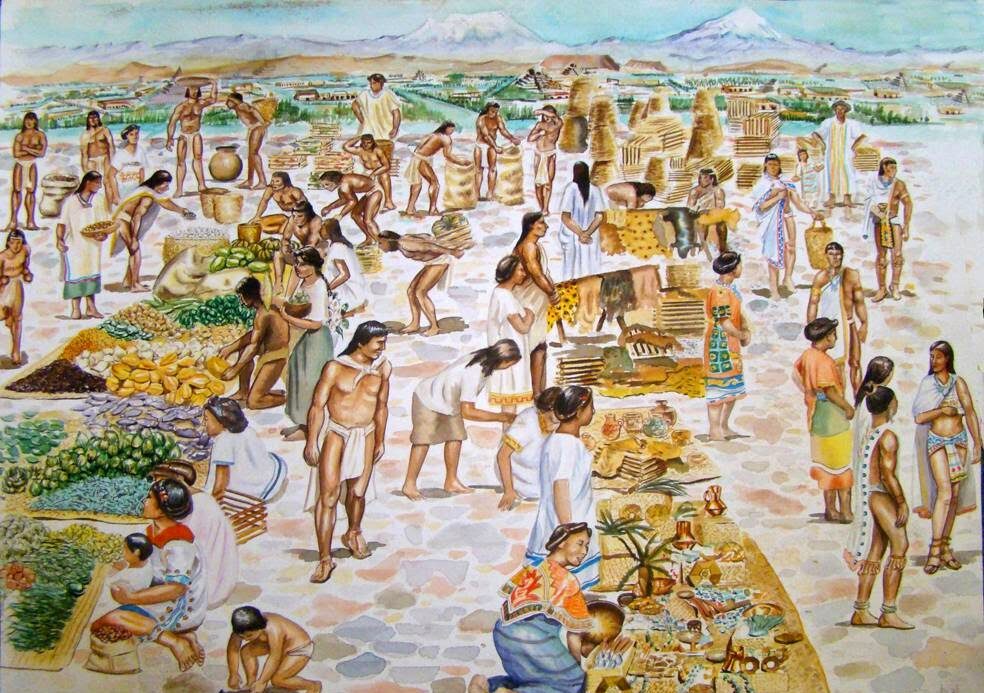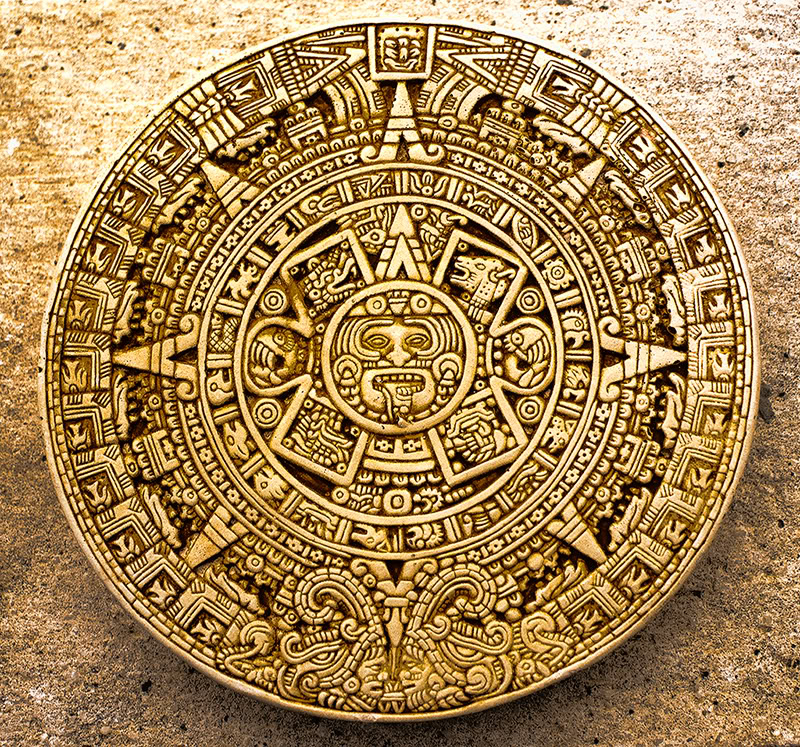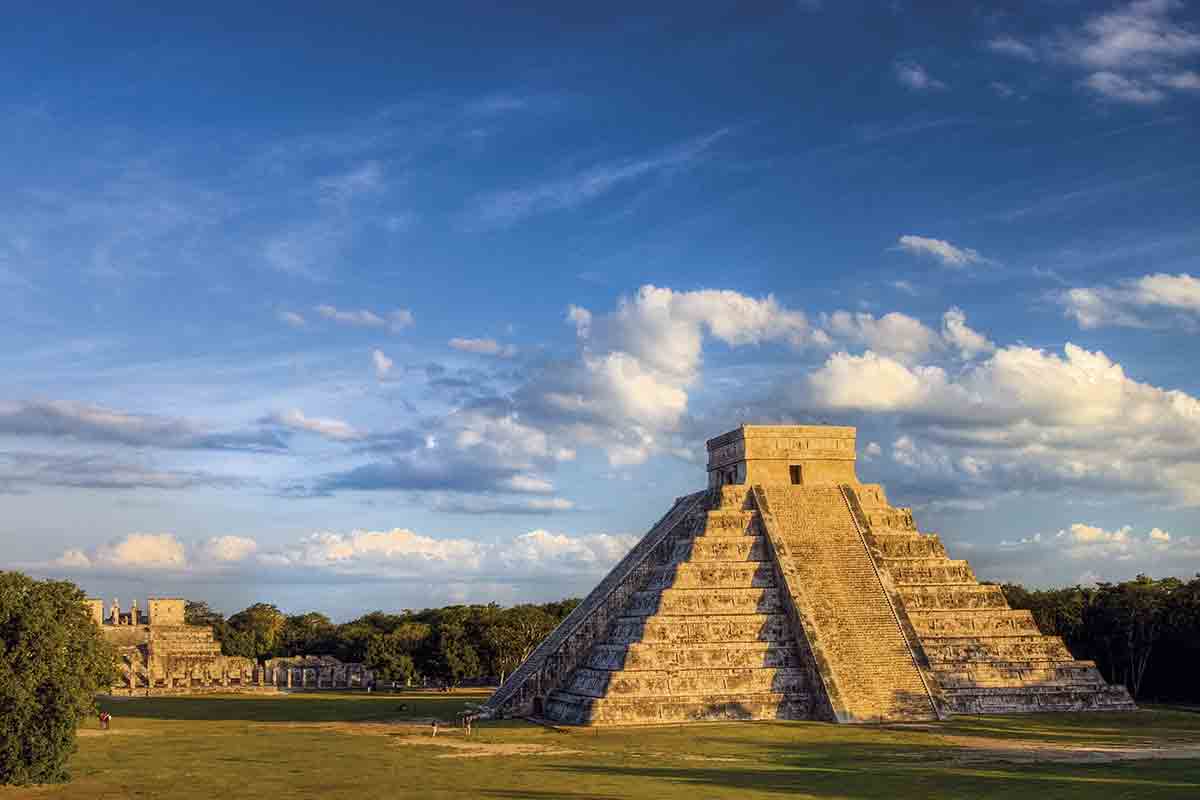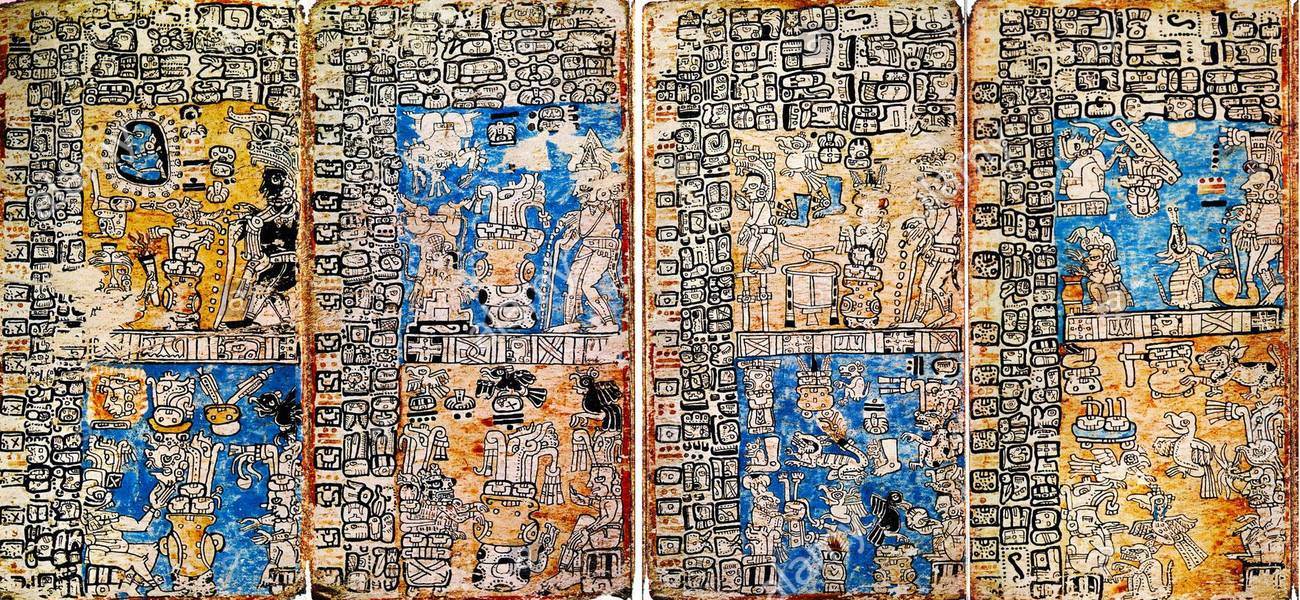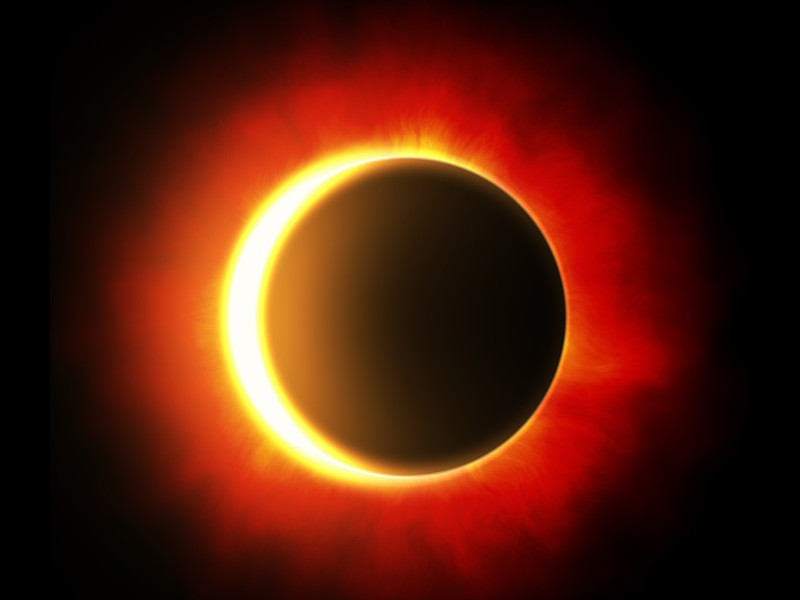There are many mysteries and contributions that the Mayans left us, many of these of great influence on the phenomena that occur in current times. Learn in this article all about the mayan astronomy, mysteries, predictions and more.

What is Mayan Astronomy?
The astronomy of the Mayans goes far beyond customs and traditions, it is a culture that made great and unique contributions to science.
In the midst of the peoples of the cultural zone of America known as Mesoamerica, which extends into the territory of Mexico, Guatemala, El Salvador, Chile, Belize, also with a presence in Honduras, Costa Rica and Nicaragua. The visualization of the stars was valuablely important for spiritual growth and material life in cooperation with other societies.
The Mesoamerican culture, despite having some characteristics that make it exclusive, one of these of great relevance, is the use of the Lunita Larga calendar, with which the Mayans of the classic period managed to make longer-term estimates.
The Mayans made precise calculations of the synodic periods of Mercury, Venus, Mars, Jupiter and Saturn. They calculated with great precision the periods of the Moon, the Sun and stars such as the Pleiades, which they named Tzab-ek (rattle star) and announced the beginning of their various ritual festivities.
The TzolKin calendar of 260 days is the most mysterious calendar in terms of its creation, several demand that it be based on an approach to human management, other scholars of the matter link it with astro cycles visible from the Earth Dimensions.
There is also a hypothesis expressed by the Geographer Vicent Malmstrom where he relates that his birth was established by the cycles of the sun, by coming from the southern region of the Mexican state of Chiapas (Izapa) and from the country of Guatemala at about 15 ° North, where It happens on the same days (April 29 the first and August 13 the second) with a break of 260 days between one and the other.
In Mayan astronomy, the Milky Way was a central part of cosmology, it was called, according to the findings, Xibalba Be or road to the underworld. Wakah Chan called it the same way and sometimes also called it Kiche'.
They kept a zodiac, supported by the ecliptic, referring to the passage of the sun through the fixed constellations. This is on Stela 10 Tikal and 1 Xuitún, both sites in the Petén area of Guatemala, as well as in the Grolier Codex.
The practice of Mayan astronomy was exclusive to the priests of this culture, however, the common population had strong respect for astronomical practices and governed their lives according to the preaching of the priests.
The practice of mayan astronomy It remained even after colonization, being carried out by practitioners in secret and later combining them with the rites of daily life of the Mayan population, some of which are still in force today.
The priests had knowledge of the movements of the celestial bodies and were able to approach the divination of the eclipses and the route of the planet Venus observed from the earth. This gave him a special respect over the population, who considered them intimately linked to the deities.
The gods worshiped by the Mayans received a name and special properties were granted to each of them, such as Venus, which was called Ah Chicum Ek', which means "The great morning star", many of these names were surnames of the most representative people of the Mayan population.
Of the Mayan Codices, the Dresden is considered a fundamental compendium of Mayan astronomy.
The Mayans are recognized to this day, for their great architectural works, you consider works of art, the accuracy in mathematical calculations and the relationship that all this has with the predictive writings about the future of humanity and the natural phenomena that would be to happen.
Mayan cosmology
The Mayan culture structured the cosmos as an organization subdivided into three segments and each one was divided into four corners:
- Above is the celestial vault, supported on top of the Bacabs, here the most important astronomical phenomena took place, especially the path of the sun.
- At the intermediate level, the world of men is established in which the aspects of daily life spread, therefore, the earth was imagined as a huge square surface and its corners were placed in the direction of the cardinal points, where Pauahtunes are located.
- The lower level, located under water, was overwhelmed by the underworld or Xibalbá. In this frightening place, a violent battle of the sun took place, after its diurnal journey through the celestial vault, with the different infernal beings and deities that it defeated, thus restarting its journey through the upper level of the world.
Differences and Similarities between the European and Mayan Calendar
These are the two great calendars on which societies are based, between them there are both differences and similarities.
European Calendar
Emperor Julius Caesar, in the year 46 BC established that from that moment the years would be made up of months and that these would be approximately 12, in turn these months are made up of 30 days each, except for the leap year, where a month would have one more year, that is, 365 days in a conventional year and 366 days in a leap year. What was called the Civil year would then have an approximate length of 365,25 days. It is because of this decree that this calendar was called the "Julian calendar".
There were exactly 365,2422 days, which confirm the solar year, in the year 1582, in the middle of the winter solstice and December, there were real differences between this period and the spring equinox and Easter.
Pope Gregory XIII with the support of the Italian astronomer Aloysins Lilius (Luis Lilio), reformed this method to repeal the days of October 5 and 14, 1582, which brought leap years back to the calendar.
The calendar cancels three days every four centuries, establishing that the centuries are leap years, if they are divisible by 400, for example, 1700, 1800, 1900 are not leap years, but 1600 and 2000 are. This is the Gregorian calendar.
Astronomers use both the Julian and the Gregorian calendars, the previous dates of 46 BC are transformed into the Julian calendar, this is known as the Proleptic Julian calendar.
Astronomy makes its calculations starting from the year 0, so the years before this are not considered negative years, they are given the name of astronomical station.
In the historical data the year 0 does not appear, these begin in the year 1 BC, continue to the year 1 AD, for example the year 3113 would be the same as the year 3113 AD according to astronomy data.
Numerous Mayanists vary dates in the Mayan calendar to the Proleptic Gregorian calendar. In this calendar, the different dates of the Julian calendar are verified as if the Gregorian calendar had been used prior to October 15, 1582.
In order to be able to study these dates, it was necessary to transfer them to dates of the astronomical calendar, because the astronomers of the time based their calculations on the Julian and Gregorian calendars.
The dates of the Proleptic Gregorian calendar have marked differences mainly with astronomical dates. The Date of Mythical creation in the Mayan calendar is August 11, 3114 BC in the Proleptic Gregorian calendar equal to September 6, 3113 BC in the astronomical one.
Mayan calendar
There are three Mayan calendars, all different and with very different numbers of days.
Long Count Calendar
The long count is a calendar method of calculating time that has historical, astronomical, cosmological, mythological and astrological support. In this method, the beginning of the modern era, August 13, 3114 BC, is probably linked to the mythological birth of Venus.
In several versions they maintain that it culminated an era on December 21, 2012, it belongs to the date of the winter solstice of the northern hemisphere.
Other discoverers such as Erick Velázquez (Epigrapher) have indicated that this is referring to various Mayan groups, due to writings found in Palenque, which mention periods greater in time than the same.
It is a calendar structured in groups of 20 elements (vigesimal), grouping the twenty tuns that constitute the Katun cycle (19,7 years) the twenty karuanes, which constitute the Baktun cycle (394,25 years) and the baktun is the thirteenth part of the long count.
TzolKin Calendar
This is a 260-day calendar created by twenty periods of 13 days or thirteen scores, each of the days has a name.
Haab' Calendar
This is a combined 365-day year of 19 and 18 months with five days left over at the end of the year.
When the TzolKin and Haab' has passed, that date is known as a calendar round, it is renewed every 18.980 days, more or less every 52 years.
The return of the calendar has a myth derived from the Mayan beginnings, in the number four «Ahau» and 8 «Kamku», it is said that when this date is repeated, you see it considered as the end or the complete return of the calendar round.
How are the Mayan and European Calendars related?
The Mayan and European calendars are linked by using the same Julian day in the creation myth date -13.0.0.0.0 with 4 Ahua, 8 Kumkuu. The Julian day at noon on this day was 584,283. This is your GMT correlation.
astronomical writings
Mayan codices are the main orientations or astronomical inscriptions left by this culture at the level of Mesoamerica.
Mayan codices
At the time of the Spanish conquest, the Mayan culture was written in many books made of flexible bark cloth.
The Catholic priests and the Spanish conquerors imagined that these were promoting the spread of a pagan religion, they annihilated them as soon as they got them.
A contemptible example was the burning of an enormous number of books in Mani, in the Yucatan by Bishop Diego de Landa in July 1562. Only four of these codices are known to exist today. They are the Dresden, Madrid, Paris and Grolier Codex.
- The Dresden Codex is an astronomical calendar.
- The Madrid Codex consists primarily of the calendar and horoscopes used by the Mayan priests for their festivities and divination rituals, it also has astronomical data, however, less than those obtained in the other three surviving codices.
- The Paris Codex constitutes the prophecies for tunes and katuns and a Mayan zodiac.
- The Grolier Codex is a calendar of Venus.
Ernst Forstemann, was a librarian who at the Royal Public Library in Dresden, investigated that the Dresden Codex is an astronomical calendar and had the ability to decipher it at the beginning of the XNUMXth century.
mayan monuments
There are many Mayan monuments present in the Mesoamerican countries, which preserve a large part of the culture of Mayan astronomy.
mayan stelae
The Mayan stelae are large buildings built by the Mayans, in which dates of the Long Count calendar were placed, these in turn had six additional stelae.
Complementary series have lunar data, the number of days in the exact lunar period, its lunation length, and the number of lunations in a series of six.
The series are related to the cycle of Jupiter, each one follows a count of 819 days according to this cycle. The series repeatedly establish other phenomena, such as eclipse warnings. In Mesoamerica, there was only one incomplete eclipse that lasted two days in the year 771 AD in the month of January.
Calendar Scripts
The Mayan temples and pyramids are almost intact, decorated with hieroglyphic writing, in which calendars and astronomical texts can be seen.
How was astronomical observation carried out?
It is surprising how the Mayans practiced astronomical observation without any type of element, such as a telescope. Mayan astronomy was practiced by them with the method of direct visualization, the astronomer priests the sunsets and greetings of the sun and other celestial bodies. The creation of stelae and monuments were made based on the position of the celestial bodies.
Numerous wells located in Mayan ruins, in addition to observatories of the Central Passage of the Sun. One of the most studied sites about Mayan astronomy is the snail in Chichen Itza.
El Caracol is an observatory, a structure created to be able to continue the path of Venus through the year. The staircase leading to the cylindrical structure deviates 27,5 degrees from the alignment of some surrounding buildings to form with the northern tip of Venus.
The northwest-southeast diagonal is formed by sunrise on the summer zolstice and sunset on the winter solstice.
Astronomical Findings
There are many astronomical findings and observations made by the Mayans, findings that are studied to date.
Solar
The Mayans showed special attention to the equinoxes and solstices present in the year, evidence of this are the buildings made and that are closely related to them. The most important thing for the Mayans was the zenith passage.
In a year, the sun moves over the planet through the tropics at least twice, large buildings and temples created by the Mayans, were built for these phenomena.
The Maya were careful that the Haab' of 365 days distinguished from the tropical year by more or less than 25 days per year. A different time sequence is found in the Mayan moments that you can take advantage of to bring the tropical year closer.
The most specific sequence is that the tropical year exceeds 365 Haab' days by one day every 1508 days. The grace of a personal solstice on a given date in the Haab' is recalled after the passage of 1508 Haab' years.
The Tropical Year in the Mayan Codices
In the Mayan Codices, the solstices and equinoxes to be presented are widely reflected, through calendars and tables, which are large Mayan contributions to astronomy. Numerous solstices and equinoxes date from the middle of the XNUMXth century and the beginning of the XNUMXth century.
Dresden Codex
The major and minor tables (pages 61-69) relate the Haab', the solstices, the equinoxes, the eclipse cycle, and the year bearer (or Pop). The table is based on the middle of the XNUMXth century but contains more than a dozen dates in the middle of the XNUMXth and XNUMXth centuries.
The rain calendar (pages 29b to 30b) relates to the Haab' and the tropical year. While in the year in question the summer solstice preceded the mid-year by a few more days, this proves that the year described was AD 857 or 899.
In addition, a fragmented rain ceremony is described in four parts equivalent to the recognized Yucatecan ceremony of current ethnography.
The spliced table (pages 31a to 39a) is the mixture of two separate tables, it has rituals included in the Vayab', the midyear, agricultural and meteorological matters, it has a relationship with the midyear and the galaxies, two of them have the Venus glyph.
The table has four base dates: two in the XNUMXth century, one in the XNUMXth and one in the XNUMXth century.
The Burner calendar (pages 33c to 39c) features the seasons of the Burner cycle, a method of separating the TzolKin that is known from the colonial history of the Yucatán. The calendar also relates to eclipse seasons and seasons of the tropical year.
This calendar of Mayan astronomy involves several years before and after 1520, when the Codex may already have been in the hands of the Spanish.
The conjugal calendar (pages 22c to 23c) is one of a sequence of calendars dealing with conjugal relations between deity pairs. It could have a relationship to the winter equinox.
Also from the protected astronomical tables in the Dresden Codex, there are illustrations of deities and their reference to the positions of the planets.
Codex of Madrid
The Madrid Codex of Mayan astronomy, on pages 10b.c – 11b.c, contains two calendars to the Dresden Codex, as in the year 925, when the summer solstice took place in the same calendar year as Haab'.
The calendar on its pages 12b and 18b, shows us the astronomical currents and the prediction of rains, through icons of the Haab', in this long or long count calendar eclipse glyphs are presented with the exact time of their appearance.
1820-day calendar made up of twenty columns of ninety-one days each. Represent the tropical year on pages 58.c and 62.c. hieroglyphs show relationship with the equinox and the hieroglyphs of Venus, which locates this calendar between the year 890 and 962 AD
The Bird calendar contains in its pages, a different order in the count and distribution of days, this is 780 days. One of his designs is possibly a relation to the winter equinox. This calendar may not be dated.
The Paris Codex
God's calendar (pages 15a,b to 18a,b) is incomplete and partially finished. It is almost impossible to verify their lengths or dates, but two Haab' rituals could be recognized.
It is likely that God's calendar is similar to the seasonal tables in the Dresden Codex and God #C's calendar in those of the Paris Codex.
The Chilam Balam Books
Within Mayan astronomy are the Chilam Balam books, which are based on the middle of the Mayan year, including the solstices and equinoxes.
Building Lineups
The authors Aveni and Hartung, knowledgeable about Mayan astronomy, published studies regarding the alignment of buildings in the Mayan territory. Noting that most of them are located at coordinates 8 ° - 18 ° northwest.
They assume that orientations of 25° southeast are aligned with sunset at the summer solstice, according to Mayan astronomy.
The Caracol observatory of Chichen 'Itza is built according to the angle formed with the meridian and the circle of vertical position that crosses the structure of the earth (azimuth) at the winter solstice, this is evidenced in the diagonal alignments of the base of the Caracol, it is also associated with the summer solstice in its perpendicular alignment.
One of the windows of the round tower provides a thin strip to observe the sunset at the equinox, the Caracol was also used to see the zenith passage of the sun because the base of the upper platform and an entrance in said part are aligned. with sunset azimuth.
Other solar observatories are located in Uaxactun, Oxikintok and Yaxchilan.
Lunar
There are many scriptures that contain data about the number of days in which the exact lunations occur, as well as the position of you in a cycle of six lunations.
Innovative astronomers study the union of the sun and the moon (when the sun and the moon have the same Ecliptic longitude) the new moon. The Mayans calculated the zero day of the lunar cyclone or when the crescent moon could no longer be observed (in the palenque method).
Based on this method, Fulls and Aveni determined that the Zero date in the lunar count would occur two days after the new moon phase, according to Mayan astronomy, this gave credibility to the Palenque method.
Fulls got at least two systems and formulas distinguished and used to calculate the age and position of the moon in the cycle of its months.
Mercury
Pages 30c-33c of the Dresden Codex are a calendar of Venus and Mercury. The length of 2.349 calendar days is an approximation of the Synodic periods of Venus (4×585) and Mercury (20×117). The calendar also relates to the summer solstice and the Haab' uayeb festivities of the XNUMXth century.
Venus
It was fundamental to the people of Mesoamerica and Mayan astronomy. Their cycles were carefully followed by the Mayans.
Venus is closer to the sun than to the earth, so it overtakes the earth during its orbit. At the moment it passes behind the upper conjunct sun and between the earth and the lower conjunct sun it is invisible.
Specifically tragic is the star's disappearance at dusk and its reappearance as a morning star about eight days later, after inferior conjunction. The Venus Cycle takes 583,92 days but changes between 576,6 and 588,1 days.
Astronomers imagined the phenomenon (first and last version of sunrise or sunset of celestial bodies) using the Arcus visionis, the discrepancy between the altitude of the celestial body and the center of the sun in the time of sunrise or sunset of the body, without inserting the 34 minutes of refraction that approves observing a body prior to its sunrise or the 0,266.563.88 degrees of semi-diameter of the sun.
Atmospheric phenomena such as disappearance are not considered, the necessary Arcus visionis changes with the brightness released by the body. Venus changes in size and has different phases, thus an Arcus visionis is used in all four sunrises and frames.
Dresden Codex
Includes a Venus calendar on pages 24 and 46-50 Brickery and Bircker writes:
The Venus table tracks the Synodic cycle of Venus by noting the dates of the planet's first and last manifestations as a morning star and an evening star.
The contextual iconographic force is the first impression as a morning star (heliacal dawn), the dates were written with sufficient accuracy, the first manifestation was considered a moment of danger and the primary purpose of the Venus table was the day of informing the arrival of dangerous times.
The Table represents the TzolK'en days for the four events of appearance/disappearance of the planet while each of the 65 progressive Venus Cycles, a time of more or less 104 years, the table was used at least four times with different dates of beginning, from the XNUMXth century to the XNUMXth century AD
Because the Mayan Canonical time was 5 (4 days and the Synodic time was 583,92 days), an error was added to the tables as time passed. Probable representations of correction in the codex and are discussed by Aveni and Bricker and Bricker.
The Dresden Codex on pages 8-59 is a planetary table depicting the Synodic cycles of Mars and Venus. There were four probable base dates, two in the seventh century and two in the eighth century.
Pages 30c-33c of the Mayan Astronomy Codex, depict a Venus Mercury calendar. The 2.340 calendar days are an approximation of the Synodic periods of Venus (4×585) and Mercury (20×117). The calendar also relates to the solstice of Venus and the Haab'uayeb festivities of the XNUMXth century.
Grolier Codex
Count the TzolKin dates for the appearance/disappearance of Venus to the middle of the Venus cycles described in the Dresden Codex.
Building Lineups
The snail at Chichen Itza supports the remains of the window through which you can observe the extreme distance of the planets.
Four of the important locations of the lower shelf distinguish the points of the upper horizontal movement of the planet during the year.
The surviving window in the tower above is associated with the different extreme positions of the planet in its larger northern and southern dimensions.
Building 22 in Copán is famous and recognized as the temple of Venus due to its many inscribed symbols. It has a small window through which you can see the farthest reaches of Venus.
The Palace of the Governors in Uxmal postpones 30° from the northeast alignment of the other buildings. The door is to the southeast. More or less 6 kilometers from the door there is a pyramidal zero.
From the doorway you can see the appearance of Venus moments before reaching extreme aloofness. The shirts of the building bear numerous Chacc masks with various symbols of Venus under their eyelids.
Deeds
De Meis has 25 writings of the Long Count calendar, 11 that recognize helical phenomena and 11 of the greatest distance from Venus.
In the Bonampak Murals, the victory of King Chaan Muan is manifested, with his enemies bent over asking for their lives on a date when it was the heliacal dawn of Venus and the zenith passage of the sun.
Mars
Mars is another of the planets studied by Mayan astronomy, determining its time in orbit and movements.
The Dresden Codex
Within the Dresden Codex three spaces are located on the planet Mars, in addition in the Madrid Codex you can find a not extensive calendar also of Mars.
In the Dresden Codex there is a table of the Synodic cycle of the planet Mars, with 780 days according to its pages 43b and 45b, this would be the most visually splendid moment of Mars, in its retrograde stage, this table is dated the year 818.
The text represents an eclipse season (when the Moon is near its ascending or descending node) that corresponds to the movement of Mars.
The upper and lower calendars on pages 67 to 74 appear in the Dresden Codex, but in a different representation.
The Superior table has 13 groups of 54 days, a total of 702 days. This is the time required for Mars to return to its same celestial longitude, if celestial time contains a retrograde period. The table was verified to re-neutralize that it has seven dates indicated from the VII Century to the XI Century.
The Lower Water Table has 28 groups of 65 days, a total of 1820 days. This table only has one photograph, a scene of torrential rain on page 74, this image has been mistakenly interpreted as representing the end of the world.
The objective of this table was to analyze some cultural and natural cycles, such as the time of planting, harvesting, time of rain and hurricanes, time of eclipse and the similarity of the milky way with the horizon. The table was periodically verified and dates to different periods between the fourth and twelfth centuries.
Pages 8 to 59 of the Dresden or Dresden Codex is a planetary table that studies the Synodic cycles of Mars and Venus. There are four probable dates, two in the XNUMXth century and two in the XNUMXth century.
The Madrid Codex
On page 2a of the Madrid Codex shows a calendar of the Synodic cycle of Mars. This page is heavily damaged and probably a part of a larger table. The 78-day periods and iconography are the same as the table in the Dresden Codex.
Jupiter and Saturn
Saturn and exclusively Jupiter, are two of the brightest celestial entities in Mayan astronomy.
What is known as apparent retrograde motion is nothing more than the moment in which the planet earth circulates in its orbit around larger planets, which visually seems that they stop for a few seconds and then continue their journey.
The moment they begin or end their retrograde motion, their daily motion becomes stationary before taking another direction.
Deeds
Lounsbury revealed that the dates of many scriptures recalling the Palenque ritual families by K'inich Kan Bahlam II, which corresponds to Jupiter rising from a secondary stationary point.
It is known that the close relationships between Jupiter and Saturn or Mars were celebrated in the Mayan culture, this fact occurred according to the Gregorian calendar on June 21, 690 and July 18, 18 according to the astronomical calendar.
Fox and Justeson (1978) revealed that two of these dates are separated by 378 days, very close to the Synodic year of Saturn, it is said that this planet will achieve its second stationary place just before finishing its retrograde movement. The Brickers indicated two more dates that are part of the same sequence. El Cayó Chiapas originated in panel 1 of Dumbarton Daks, a site 12 kilometers from the Sumancinta River in Piedras Negras.
Astronomer Susan Milbrath took her studies of Jupiter to a higher level, in the classical and post-classical period, in her work is that Jupiter is written as the God K'awil.
Another element of his work is the union of the Synodic cycles of Jupiter and Saturn with their Katun cycles of the Long Count. Milbrath notes a simple connection between the images of God K and the dates that correspond to the stationary points returned from him.
Milbrath believes that K'awil is the day of the retrograde cycles of Jupiter and Saturn. The Brickers debate that interpretation.
The Mayan Codex
Within the Codices of Mayan astronomy, there is no evidence of any calendar record referring to the planets Jupiter and Saturn.
The Eclipses
There is no other phenomenon more studied and analyzed by the Mayans than eclipses, these represented, according to Mayan astronomy, an imminent danger to humanity. There are many predictions that can be found about the mayans and eclipses.
The Dresden Codex
On pages 52 and 58 of this Codex, only tables of eclipses are shown, with notices of the numerous solar and lunar eclipses, however, in these tables it is not specific how many of these could be seen in the Mayan areas.
There are 405 lunations in approximately 33 years, it is thought that it can be used again, so a correction scheme is periodically carried out. These tables are related to the solar and lunar eclipses of the cycles of Mercury and Venus, in addition to other seasonal phenomena. It begins in the XNUMXth century, but has corrections that allow it to be used until the XNUMXth century.
At the moment that the Moon's orbit crosses the ecliptic, it is where an eclipse occurs. This moment is known as non-ascending or descending, which occurs twice a year, when the node occurs, an eclipse can be approached in a period of up to 18 days before or after the node.
In three parts of the eclipse table of the Dresden Codex the dates of the eclipse season are located, specifically in the period from November to December of the year 755 AD
The Madrid Codex
The Madrid Codex is a calendar of eclipses on pages 10 and 13, very similar to those in the Dresden Codex.
These representations are based on rain, Clouds, droughts, planting and harvesting time, in addition to the relationship of these times with eclipses. These phenomena correspond to those present in the Dresden Codex of the XNUMXth or XNUMXth century.
The Paris Codex is based on rites and customs that should be celebrated at the end of the Katun, on pages 2 to 11, these rituals and astronomical events of the V and VIII centuries are represented, based on Venus and its relationship with eclipses and the constellations.
Deeds
Governor Kan II, present at the Caracol, established a temple 21 in the entire center on the playing field, with writings that represent relevant dates of events and achievements of the previous governor Agua. These dates were used by these governors to preserve important events in time and linked them to astronomical phenomena.
An example of these scriptures is the elevation of the grandfather of Kan II, governor Agua, on April 14, 553, associated with a total lunar eclipse, the Tikal war represented on April 27, 562, where an annular solar eclipse of 8 days and a 7-day prenumbral and a ball game on March 13, 593, where it marks a 5-day partial solar eclipse.
Las estrellas
Within Mayan astronomy, thirteen constellations were identified, represented in the calendar of the Paris Codex and the Madrid Codex, each of them was given a representative animal, which said constellations formed that animal. The constellations are related to other Mayan astronomy phenomena such as eclipses, Haab rituals and Venus.
The Paris Codex
The Paris Codex keeps on its pages 21 to 24, a calendar of the zodiac, structured by five rows with 364 days each, these rows are subdivided into 13 of which correspond to 28 days each, its symbology is represented by animals, one of the most emblematic is the scorpion that forms a constellation and hieroglyphics of eclipses. Belonging to the eighth century.
The Madrid Codex
Extensive and representative calendar of the rituals, ceremonies, and agriculture of the Mayan astronomy, contained in pages 65, 72 and 73b, of the Madrid Codex, this includes references to the constellations, synodic cycles, eclipses and other phenomena.
The Milky Way
It is a formation in the galaxy of a spiral created by more than two hundred billion stars, among them is the solar system.
This appears as a cloudy formation of stars, these form the circle of the galaxy if observed from the side, of diffuse light with a band of ten degrees that crosses the sky, passing through the highest point of the elliptical. It is characterized by a large dark dust haze that is located in the southern and western part.
There are no calendars, codices or inscriptions that express something specific about the milky way, however, it is manifested in the calendars and codices of other Mayan astronomy phenomena.
Prediction of the Equinoxes
The equinoxes in Mayan astronomy, move through the celestial sphere (ecliptic) if compared to stationary stars, these move contrary to the movement of the sun in a year through the ecliptic, it is said that these they return to the starting position every 26 thousand years.
There is in the Dresden Codex what is called "Snake Numbers", specifically on pages 61 to 69, the date tables are written on coils of snakes. The first to realize this was Beyer, stating that the serpent series is based on unusual numbers 1.18.1.8.0.16, which means 5.842.096 days more than 30 thousand years ago.
For Grofe these intervals were very similar to the integer multiples of the time that passes between two consecutive trips of the planet on its orbit, which is known as a sidereal year, where the stars are taken as reference.
He concludes that the serpent series demonstrates how the Mayans in their astronomy predicted and calculated the sidereal position of lunar eclipses in a tropical year, which would be a precision of the equinoxes. For their part, Bricker and Bricker consider that it is based on an erroneous interpretation of the title and their reasons are reflected in the astronomy of the Mayan Codices.
The Mayans do not stand out for having sophisticated instruments to carry out the mapping of the position of the celestial object under study, their observations were made by eye, with rudimentary elements.
They did not have sextants or armillary spheres like those that other civilizations had, which makes the Mayan Empire more impressive. The interest of the Mayans were specific astronomical elements such as the sun, the moon, Venus, the milky way and the stars, in addition to the constellations, of course all this information was only available to the Mayan priests, who were the astronomers of the time, who dedicated their lives to tracing the passage of these elements in the universe.
This has been one of the civilizations that has given the most contribution to science, considered an Empire, with mysteries that have not yet been deciphered.
How were the Mayans able to predict eclipses?
It is believed that the Mayans used astronomy to study the movements of the earth, however, it was known that this is not entirely true, astronomy for the Mayans was more a method of divination.
A thousand years ago the Mayan civilization made incredible predictions, without the use of measuring instruments, they were based on highly accurate mathematical calculations, the Mesoamerican population today continues to be impressed.
The Mayan Empire created a unique calendar, with exact predictions of the cycles of the moon, the structure of the sun, eclipses and the movement of heavenly bodies. The Mayan calendars are more exact than the calculations made in the before Christ.
They had exact records of the planets up to Jupiter, they also gave names to the gods in which they sought eternal life.
The priests use astronomy to learn about past events, to be able to anticipate future ones and thus make prophecies, they organized their astronomical findings and recorded solar and lunar eclipses.
With a simple method of crossed sticks, the astronomer priests could make astronomical observations. At the time that the region of Mesoamerica was invaded by the Spanish and other Europeans, the Mayans figured out how to continue practicing divination methods in a hidden way and disguising it with other cults or rituals.
For the Mayans, eclipses were threats to the world, which is why so much emphasis was placed on knowing exactly when they occurred. In the Dresden Codex, eclipses were represented as serpents that threatened to devour the world.
The emphasis on predicting them in Mayan astronomy was to prepare the proper ceremonies when they occurred. For the Mayans, the sun and the moon were eaten by the eclipse, which caused fear in civilization.
They considered that the light would go away forever, which would mean the end of the world and therefore of civilization, it is for all this that eclipses were a priority in the studies and calculations of the dates where these phenomena would occur, currently this is one of the greatest contributions of Mayan astronomy.
For them the sun was a God, who gives life and peace, when the eclipses occurred, this god was harmed, which caused havoc in the inhabitants, for this reason rituals were carried out so that the days of darkness would pass soon and the light would return to the society.


